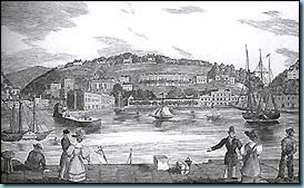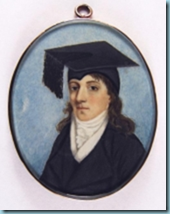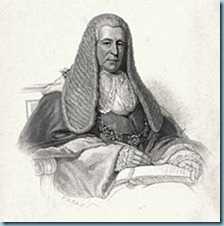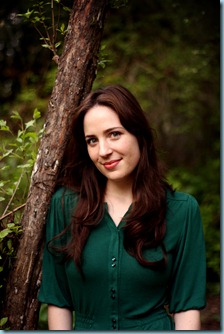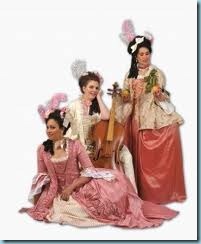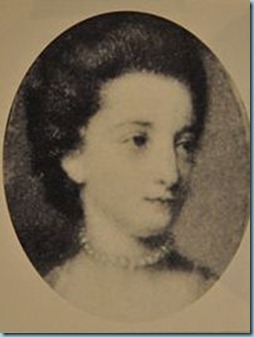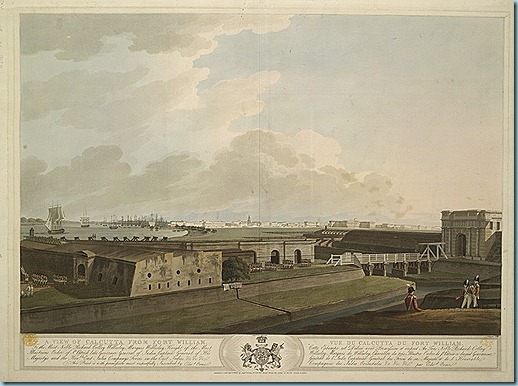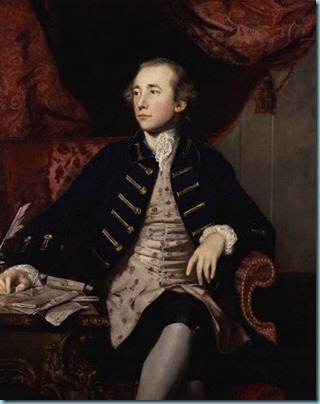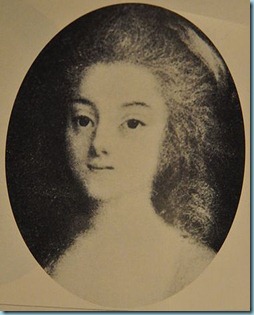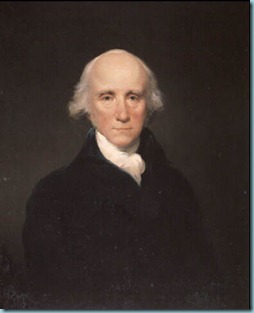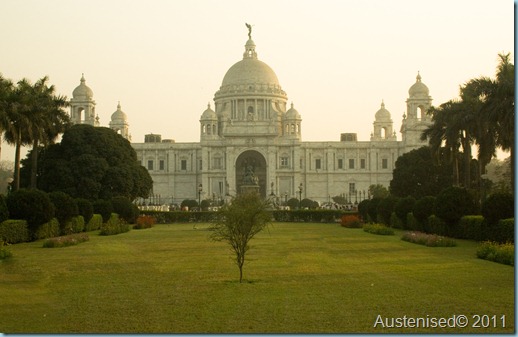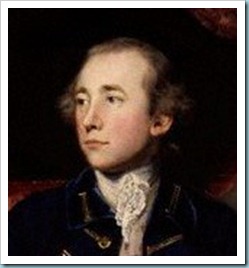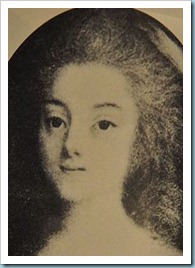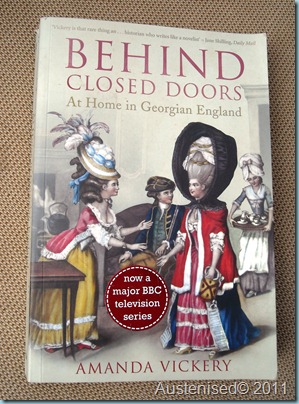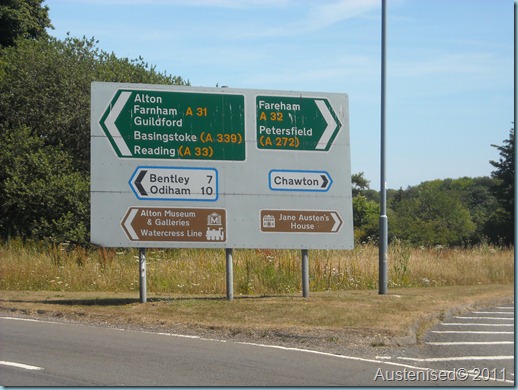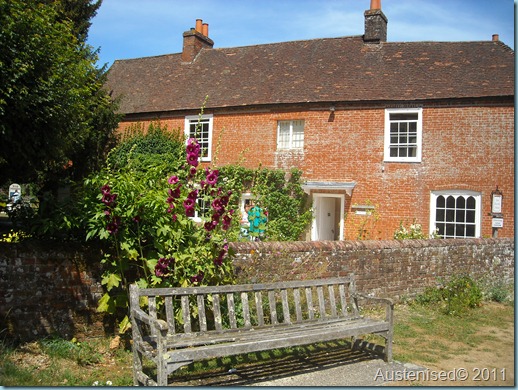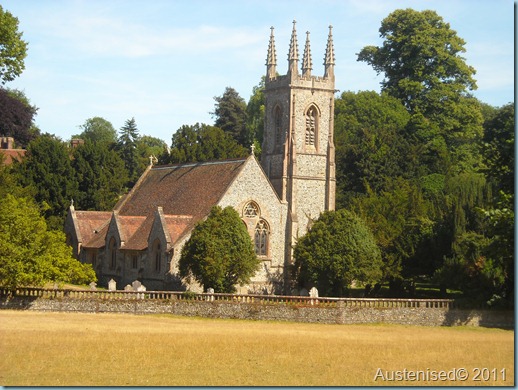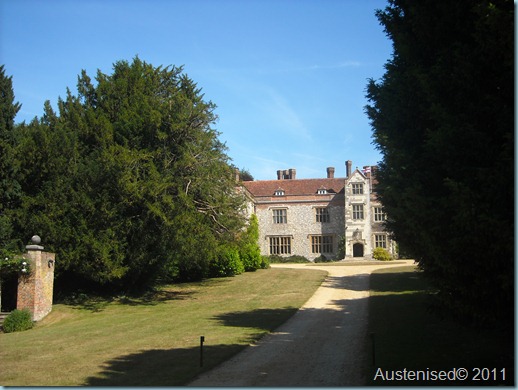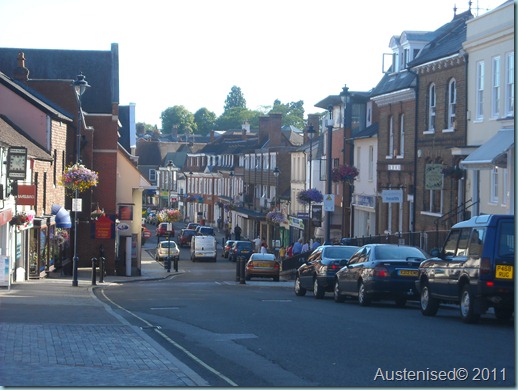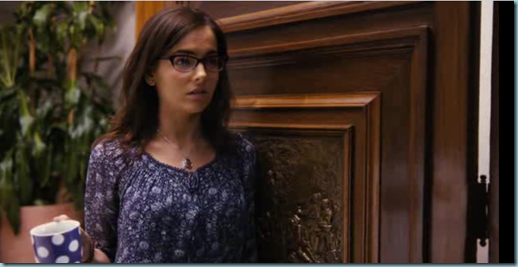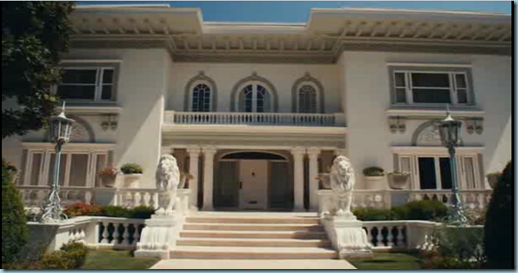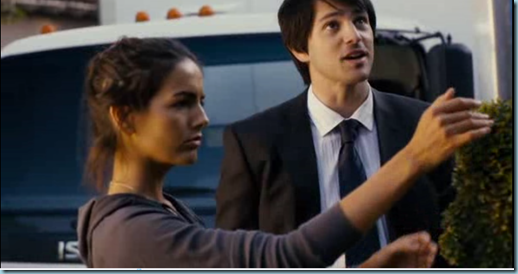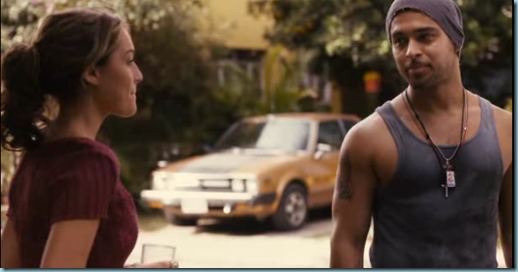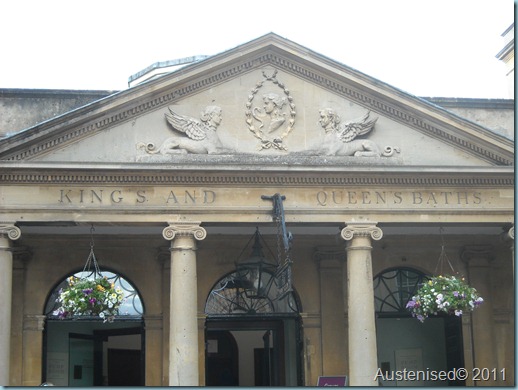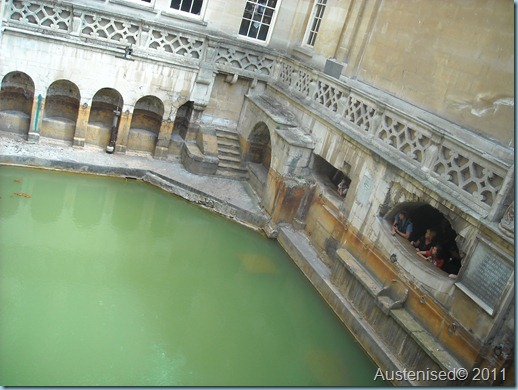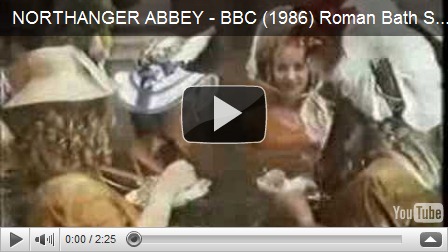Search this Blog
Thursday, September 1, 2011
Jane Austen’s Love Mystery: Part 5
Wednesday, August 31, 2011
Jane Austen’s Love Mystery: Part 4
4. Edward Bridges
To this day, mystery surrounds Jane’s relationship with Edward Bridges. You may have seen him as one of Jane’s persistent suitors in Miss Austen Regrets, but in actual fact there is very little that we know about the nature of their relationship.
Mr Bridges played by Hugh Bonneville in Miss Austen Regrets.
Image from http://bit.ly/mOP2c5.
The Reverend Brook Edward Bridges of Goodnestone Farm was Jane’s brother, Edward’s brother-in-law. Son of a baronet, he became a clergyman like his other brothers. Jane became familiar with Edward during her visits to Godmersham in the mid-1790’s and seemed to enjoy his company.
During a visit in 1805, Jane noticed that Edward was being particularly attentive to her. She wrote to Cassandra, "We could not begin dinner till six. We were agreeably surprised by Edward Bridges's company to it. . . . It is impossible to do justice to the hospitality of his attentions towards me; he made a point of ordering toasted cheese for supper entirely on my account". As I wrote before, toasted cheese was a favourite supper of Jane Austen’s.
A few years later, in 1808, Jane wrote to Cassandra from Godmersham, “[Lady Bridges’] son Edward was also looking very well, & with manners as un-altered as hers". In another letter written later that year, Jane mentioned an “invitation” that Edward had made to her: “I wish you may be able to accept Lady Bridges's invitation, though I could not her son Edward's”.
Now whatever this invitation may be, remains a mystery to us. Biographers Deirdre La Faye and the flighty Jon Spence certainly seem convinced that Edward proposed to Jane in 1808 and was politely rejected. If his proposal was indeed turned down, there seems to have been no hard feelings on either side, as the friendship continued after that. When Edward became engaged to Harriet Foote later in the same year, she wished him well.
Tuesday, August 30, 2011
Jane Austen’s Love Mystery: Part 3
3. Harris Bigg-Wither
The story of Harris Bigg-Wither’s proposal to Jane must have baffled her biographers for years. What made Jane Austen accept an offer of marriage and then turn it down overnight?
Harris Bigg-Wither. Image from Wikipedia.
In December 1802, Jane and Cassandra were invited to stay with their friends, the Bigg sisters, at Manydown Park. Alethea and Catherine Bigg were childhood friends of the Austen children and Jane and Cassandra enjoyed staying with them. Their brother, Harris Bigg-Wither, was heir to the Manydown estate, and Jane remembered him from her childhood as being a plain and awkward boy with a stammer. He had by now grown somewhat more confident and was of a good height.
On the eve of 2 December, Harris proposed to Jane and was accepted. She was fond of him, liked the family, and was comfortable at Manydown, being so close to Steventon. Everyone rejoiced and celebrated the engagement that evening. However, Jane must have spent the night going over her decision, considering the fact that Harris was 6 years younger than her, she was not attracted to him, and that she could not be happy being married to someone she didn’t love. She explained her change of heart to Harris in the morning, and asked her brother James to take her and Cassandra back to Steventon immediately and from there on home to Bath.
The situation must have been awkward for both the families, but fortunately the Austen and the Bigg sisters’ friendship was not affected by it. Later, though, Caroline Austen asked Jane’s biographer, James Edward Austen-Leigh, not to mention the event in his memoirs, as it would have caused embarrassment to the family.
No doubt, Jane must have occasionally regretted her decision. As mistress of a large estate, her future would have been secured, she would have been able to help her ageing parents and sister, and she would have lead a life of comfort. However, for Jane, marrying without love was not an option. As she advised her niece Fanny later on, “Anything is to be preferred or endured rather than marrying without Affection.” And she certainly did not love Harris Bigg-Wither, as her niece Caroline remembered in her old age.
Monday, August 29, 2011
Jane Austen’s Love Mystery: Part 2
2. Dr Samuel Blackall
Image: An unknown young scholar.
There are several references to Dr Samuel Blackall in Austen’s biographies. Dr Blackall was a theology student and fellow of Emmanuel College in Cambridge. Jane and Dr Blackall met in 1798 when he was staying with his family friends, the Lefroys. Despite the Tom Lefroy affair, Jane had remained friends with Mrs Lefroy and was a frequent visitor to Ashe.
At the time, Dr Blackall was believed to be “in want of a wife”, as he was about to give up his fellowship and settle down at a parish. Perhaps Mrs Lefroy thought that Dr Blackall would be a good match for Jane. However, despite several matchmaking efforts, it appears that neither party warmed up to the idea. Mrs Lefroy later showed her a letter from Dr Blackall, of which Jane wrote, “There seems no likelihood of his coming into Hampshire this Christmas, and it is therefore most probable that our indifference will soon be mutual, unless his regard, which appeared to spring from knowing nothing of me at first, is best supported by never seeing me.'
Despite the “mutual indifference” admitted by Jane herself, some people do believe that Dr Blackall was Jane’s one true love. Amongst these was her niece Catherine Hubback who wrote, “if she ever was in love, I believe it was with Dr Blackall whom they met at some watering place…there is no doubt she admired him extremely, and perhaps regretted parting”. We do know that she met someone at a watering place years later, but there is some confusion between the nieces and nephews as to the identity of this person. I will come back to the seaside mystery in Part 5.
Sunday, August 28, 2011
Jane Austen’s Love Mystery: Part 1
1. Tom Lefroy
Biographer Jon Spence is convinced that Thomas Langlois Lefroy was Jane Austen’s one and true love and that she suffered for years following her loss. His book Becoming Jane Austen inspired the film, Becoming Jane, in which Jane’s relationship with Tom is portrayed as a full-blown romantic affair. Other biographers have also stressed the importance of the affair in Jane’s life.
Young Tom Lefroy. Image from Wikipedia Archives.
Jane and Tom met during the Christmas season of 1795, when Jane was 20 years old. He was visiting his aunt and uncle, George and Anne Lefroy, at Ashe Parsonage, on his way to London where he was to study law. Anne Lefroy was a close friend of Jane Austen’s and a neighbour to the Austen family. Jane and Tom met at 4 balls and danced together. Jane obviously liked him, describing him as “a very gentlemanlike, good-looking, pleasant young man”.
Jane told Cassandra, “imagine to yourself everything most profligate and shocking in the way of dancing and sitting down together”. Lively Jane must have flirted with Tom very openly, as Tom was “excessively laughed at about me at Ashe”, to the point that he once ran away when she visited Ashe!
Jane always describes Tom with light humour in her letters. Before a ball at Ashe, she wrote “I look forward with great impatience to it, as I rather expect to receive an offer from my friend… I shall turn it down, however, unless he promises to give away his white coat”. She also joked, “I mean to confine myself in the future to Mr Tom Lefroy… for whom I do not care a sixpence.”
The flirtation with Tom was not to last. Before their last ball together, Jane ironically wrote, “at length the day is come on which I am to flirt my last with Tom Lefroy & when you receive this it will be over. My tears flow, as I write, at the melancholy idea.” Tom was to proceed to London and the young couple never met again. It was Mrs Lefroy who sent him away, realising that the youngsters were about to form an attachment and neither of them had money to sustain a good living. He was certainly a practically-minded man, as on his return to Ireland, he married a rich heiress and moved on in life.
Tom Lefroy later became Chief Justice of Ireland and lived up to the old age of 93. In his last years his nephew asked him if he had loved Jane Austen, and he admitted that he had been in love with her, although it had been “a boyish love”.
The Chief Justice. Image from Wikipedia.
It is clear that there was a romance between the two, but how much this affected Jane Austen is unknown. According to Jane’s nephew James Edward Austen-Leigh and niece Caroline, the romance had been nothing out of the ordinary. Caroline wrote, “there was something in it, is true – but nothing out of the common way…nothing to call ill usage & no very serious sorrow endured” - a youthful, innocent flirtation, perhaps. There is no evidence to suggest that she had been deeply touched by this affair.
Saturday, August 27, 2011
Jane Austen’s Love Mystery
- For a mystery it is, thanks to the lack of biographical data from the bulk of her twenties and the discreteness with which Jane Austen handled her personal feelings in her letters.
I am sure that all fans of Jane Austen are intrigued to know if Jane Austen was ever in love, and why she never married. What inspired her to write 5 such influential novels about love and marriage? No one knows for sure, but all her biographers seem to have their own ideas about Jane’s romantic leanings.
You must have seen the heavily dramatised, fictional film, Becoming Jane, based on Jon Spence’s biography, which portrays Jane Austen madly in love with Tom Lefroy in her early twenties, up to the point of nearly eloping with him. And the slightly more biographical, yet fictional Miss Austen Regrets, which assumes that later in life, Jane probably regretted having never married and secured a safe future for her and the ladies in her family.
Why did Jane Austen decide not to marry? Did she ever love a man enough to marry him, and lose him? Or was she simply not a romantic person at all?
In this series of articles I will now discuss some of Jane’s romantic connections and how they might have influenced the choices she made in life.
Before I begin, can you identify any of these 5 people thought to have been Jane’s lovers? And who – if any - do you think was Jane’s great love?
Saturday, August 20, 2011
Meet Kaitlin Saunders, Author of “A Modern Day Persuasion”
About the Author
Book Synopsis
| Nearly eight years ago, Anne’s family, specifically her father, convinced her that she was too young to wed and insinuated that her fiancé Rick was solely interested in her wealth and status. Against her better judgment, Anne agreed to postpone the marriage, only to watch the love of her life walk away, never to be heard from again. Since then, time has not been kind, and with the family fortune now gone and Anne unable to move on with her life romantically, she struggles to make a name for herself as a greeting card designer. However, a series of serendipitous events causes Rick to re-enter her life, and at the same time a new beau seeks to claim her affections. The question that needs answering, however, remains the same: Can Anne recover from her previous rejection and love again? |
Meet Kaitlin
Anna: Hi Kaitlin! Welcome to Austenised. Congratulations on publishing your book “A Modern Day Persuasion” and bringing Jane Austen to life. It was interesting to read your novel and see how Persuasion would fit into the modern context. I would like to know more about your experience of writing the novel and your inspirations for writing it.
Could you start by describing your biggest challenge in adapting a Jane Austen novel?
Kaitlin: My biggest challenge was taking Jane's premise for Persuasion and placing it into a modern context without perverting her original intent. Sure, you can write a modern day tale of her original idea, but will it really be Austen's beloved characters brought to life in our century? My number one goal while writing this novel was to simply modernize the circumstances and occupations of her characters, not alter who they are or how the story plays out.
Anna: In your dedication, you mention that your mother introduced you to Jane Austen. How did this happen and what was it that made you fall in love with her novels in the first place?
Kaitlin: My mother and I would have regular “girls nights” when I was growing up and watch old classics, including the 1980's Pride and Prejudice and any other adaptations we could get our hands on. I became entranced with the language, the manners and style of dress. As I grew older, I read the novels for myself and later, it was my mother who encouraged me to write A Modern Day Persuasion.
Anna: Which is your favourite Jane Austen novel? How did you choose to adapt Persuasion in particular?
Kaitlin: Persuasion is my favourite Jane Austen novel with Mansfield Park and Sense and Sensibility tying for a close second. I think I appreciate these three novels in particular because Anne, Fanny, and Elinor are so overlooked yet, because they are good and patient, they are given their heart's desires in the end. I chose to adapt Persuasion because I've heard it's one of the least popular of Austen's Major Six, and that's a pity if you ask me! Hopefully my modern day re-telling will help it gain popularity.
Anna: Your novel carefully follows the sequence of events in the original novel. How did you set off planning your novel?
Kaitlin: If you want the inside scoop, I first wrote A Modern Day Persuasion as a screenplay—which is why some readers comment that if flows like a movie and easily creates images. And Anna, I'm so glad you noticed how closely I tried to follow the original's sequence of events.
Anna: You have set your novel in modern California and Oregon. How did you select the settings for your novel?
Kaitlin: I am an Oregon-born and bred woman with family in California. Not only did it ease the writing process by keeping some familiarity to my story, but it also accommodated much of the settings necessary for the book's plot.
Anna: Your story is very faithful to the original. Did you face any difficulty in adapting any of the storyline or characters to the modern day context?
Kaitlin: Thank you! Yes, I did face some complications when adapting Persuasion. For starters, Rick couldn't make a fortune through the Navy like in days past; Anne would have a career; and it would be gross if Mr. Elliot, Anne's first cousin, was still pursuing her in this present day world!
Anna: Jane Austen’s main character, Anne, is a reserved and sensible, yet sweet woman with strong moral feelings. How do you think the character of Anne relates to a modern reader?
Kaitlin: It was important to me that Anne remain Jane's Anne. Anne is that shy girl in the background whom when you get to know one-on-one might have a lot to say! She's loyal, sensible, will listen to you, and feels things very deeply. Anne is the type of friend we all want standing beside us through the ups and downs, and that's what I call an ideal lady.
Anna: I enjoyed your hilarious adaptation of the hypochondriac Mary Musgrove. Who is your favourite character in “A Modern Day Persuasion” and why?
Kaitlin: Mary is a handful, isn't she! You should have heard my mother reading Mary's dialogue when completing some editing for me—hilarious! Mary was definitely one of the funniest characters to write, but it is Anne whom I so admire. Her patience, strong character, sweetness and especially her caring attitude is an everyday inspiration and standard to aspire to.
Anna: Jane Austen wrote in a unique style of her own, and there have been many attempts to replicate it since her lifetime. How is your style of writing inspired by Jane Austen?
Kaitlin: I want my stories to be relatable and Jane, I believe, was the master at making a circumstance hit home. She wrote about what she knew and had learned from those around her. Jane was a very observant lady! She brought to life characters that ring true even in this day and age and it inspires to me to likewise capture some of the ironic things we all encounter everyday.
Anna: Who is your target audience with “A Modern Day Persuasion”? Do you think that your novel will inspire new readers to explore the classic?
Kaitlin: My target audience is anybody and everybody! And yes, I hope my novel will inspire new readers to explore Austen's work as well as other classics. Ideally, after completing my novel, readers will desire to read the original and see how it compares and differs from mine.
Anna: Last, but not least, I would be curious to know if you are planning to write any more adaptations of Jane Austen’s novels - or are you planning to venture to something completely different?
Kaitlin: That's a great question. I'm currently working on two more modern day adaptations while writing several new and completely different stories. I like to keep busy!
Anna: Thank you for the interview, Kaitlin – looking forward to seeing more of you!
You can read more about Kaitlin Saunders on her website at http://www.kaitlin-saunders.com/.
Sunday, July 31, 2011
Snippets of Georgian Pop Music by Lady Georgianna
Jane Austen is known to have played classical music on the pianoforte and attended classical concerts. However, there existed a more light-hearted, teasing, popular style of music in the Georgian times that you may not be aware of: the music of the pleasure gardens of London, which reminds one of various scenes in Fanny Burney’s Evelina with its rogues and harlots.
Image from http://www.lady-g.co.uk/.
The newest issue of Jane Austen’s Regency World (52) writes about an 18th-century girl band called Lady Georgianna (purposefully with two n’s to differentiate themselves from Lady Georgiana Cavendish, a famous 18th-century socialite). The band consists of three members who dress up in elaborate, 18th-century costumes to perform pop music of the Georgian times:
- Allegra (Abigail Seabrook) – Mezzo Soprano
- Isabella Wrighten (Hetti Price) – Cello
- Signora Storace (Micaela Smitz) – Harpsichord
To get a feel of the humorous, light-hearted music performed by this fun-loving group of musicians, click http://www.lady-g.co.uk/media/audio. The group will be performing at the Jane Austen Festival in Bath this September, so some of you may get the opportunity to hear them live.
Sunday, July 24, 2011
Jane Austen’s Colonial Connections
Having lived in India and travelled widely across the country, it has been fascinating for me to explore the connections between Jane Austen and India’s colonial past. While Jane Austen herself never travelled beyond southern England, the affairs of her well-travelled aunt Philadelphia Hancock (née Austen) and captivating, beautiful cousin Eliza De Feuillide were widely discussed at the rectory. According to Jane’s nephew, William Austen-Leigh, these discussions must have generated an interest in Jane in the affairs of France and India.
Philadelphia Hancock. Image from: http://bit.ly/nVVc2W
Jane’s aunt, Phila, certainly lead an eventful life. A penniless orphan, she ventured to India at the age of 21 in search of a husband. At the time, men would travel to India to make a fortune in trade, while women would travel East in search of a profitable marriage.
Fort William, the centre of British power in Calcutta. Image from http://bit.ly/n3VODN
Six months later, Phila was married to Tysoe Hancock, a man 20 years older than herself, who was working as a surgeon for the East India Company. The marriage was unlikely to have been a happy one. Hancock was apparently a melancholy, sickly man who seemed older than his years. Jane wrote about her aunt as follows:
“She had been… unhappily married…united to a man of double her own age, whose disposition was not amiable, and whose manners were unpleasing, though his character was respectable.” (p. 27, Austen-Leigh)
In 1759, the Hancocks moved from Madras to Calcutta and formed a friendship with Warren Hastings, an administrator with the East India Company, who was later made the first Governor General of Bengal. Hastings was an influential administrator who laid the foundation for British power in India but had respect on the local ways of government or culture. In Calcutta, the Hancocks became close to Hastings and they set up various business ventures together.
Warren Hastings. Image from: http://bit.ly/nmdmRv
Warren Hastings had lost a daughter, and he soon became a widower as his wife, Mary, died at childbirth. At Phila’s recommendation, Hastings sent his son, George, to England to be under the care of Mr Austen who may have been acquainted with Hastings from his youth. Frail George, however, died of diphtheria at the age in of 6. Mrs Austen is said to have felt great grief at the demise of George and Hastings always remained grateful to the Austens for looking after him.
Warren Hastings’ house in Calcutta. Image from: http://bit.ly/qIf56J
In the meanwhile in India, Phila became pregnant and in 1761, a daughter was born: Elizabeth, to be known as Bessy and, later, Eliza. Hastings was made her godfather and she was probably named after Hastings’ stillborn daughter, Elizabeth.
The Hancocks’ marriage had been childless for 8 years and there is some speculation amongst biographers as to whether Bessy really was Hancock’s son. Unsurprisingly, malicious rumours began to spread about a possible affair between Phila and Hastings. Lord Clive, who was the Governor of India at the time, wrote to his wife, saying Mrs Hancock “abandoned herself to Mr Hastings”, urging his wife not to keep company to Philadelphia. We do not know whether these rumours reached Steventon, but perhaps the Austens had their own doubts about Bessy’s father.
Bessy Hancock/Eliza de Feuillide. Image from http://bit.ly/oadRhx.
The Hancocks later moved to England. While Warren Hastings never officially acknowledged paternity, he stayed closely in touch with the Hancocks , supervising Bessy’s education and providing for her upkeep. He set up a trust fund of £10,000 for Bessy, which would support her for years to come. When Eliza was 10 years old, her mother told her that her godfather had left her a fortune. Mr Hancock warned his wife not to talk to anyone about it.
“Let me caution you not to acquaint even the dearest friend you have with this circumstance. Tell Betsy only that her godfather has made her a great present, but not the particulars” (AP, p. 68) .
Perhaps Mr Hancock was insecure about his status as Bessy’s father?
After Mr Hancock died in 1774, Phila’s income reduced more than expected, and she decided to take Bessy to the Continent where the cost of living was lower than in England. They stayed in touch with Hastings, who was becoming more influential in India. In a letter, Hastings affectionately writes to Phila,
“My dear and ever-valued friend…Kiss my dear Bessy for me, and assure her of my tenderest affection. May the God of goodness bless you both!” (AP, p. 59-60).
Later in life, Bessy – then known as Eliza – married a French count, Comte De Feuillide, and had a son whom she called Hastings in honour of her loyal godfather. After the Comte was guillotined in the French Revolution, she went on to marry her cousin, Henry Austen (Jane’s brother), who also corresponded with Hastings.
The Austens had a lasting admiration for Warren Hastings. When Hastings was in England, the Austens probably met him. With a taste for classical learning as well as a great knowledge of the Indian culture, Hastings was an inspiration for the Austens. The scholarly Mr Austen was impressed by his knowledge and urged his sons to emulate his learnings. When Hastings stood trial for charges for corruption in London, the Austen family were ready to defend him. Mr Austen also approached Hastings for help with Jane’s brother, Frank’s naval career in the East Indies.
An older Warren Hastings. Image from http://bit.ly/nAAPFo.
During his reign in India, Hastings was a patron of the arts and literature, and it is no wonder that Jane Austen approved of him. When Pride and Prejudice was published, Hastings wrote about it admiringly. Jane was delighted and wrote to Cassandra,
“I long to have you hear Mr H.’s opinion of P. & P. His admiring my Elizabeth so much is particularly welcome to me.” (p. 197, Austen-Leigh)
This imposing structure is the Victoria Memorial in Calcutta, which I visited in 2006. It was built in 1921 in honour of Queen VIctoria and houses a statue of Warren Hastings, his ivory chair and pistols.
Hastings had a successful career and he died in India at the mature age of 86. While it is not known whether Hastings really was Eliza’s natural father, the evidence does seem to point towards his paternity. If you look at their portraits carefully, you can actually see a resemblance between godfather and goddaughter. But perhaps we will never know for sure…
References:
Austen-Leigh, R.A. (ed.) 1942. Austen Papers, 1704-1856. (cited in Tomalin, C. )
Austen-Leigh, W. /Austen-Leigh, R. (2009) Jane Austen, Her Life and Letters - A Family Record. Echo Library.
Le Faye, D. (2002) Jane Austen – The World of Her Novels. Frances Lincoln.
Tomalin, C. (1997) Jane Austen – A Life. Viking.
Monday, July 18, 2011
In Memoriam– Jane Austen 16.12.1775-18.7.1817
Wednesday, July 13, 2011
Exploring the Domestic Lives of the Georgians
I enjoyed watching the first part of the documentary series “At Home With the Georgians” by Amanda Vickery that explores the domestic lives of the Georgians. Unfortunately, I have not been able to get hold of the rest of the series as yet, but the other day my husband surprised me with a copy of Vickery’s book “Behind Closed Doors – At Home in Georgian England” that the documentary is based on. I was keen to read this, as I felt that I could learn a lot from reading about the topic in more detail.
In her study, Vickery delves into historical archives, records and letters to bring out the histories of individuals who lived in that era and discusses their ideas and feelings about the home. She examines everyday household objects to get an idea of the lifestyles and of the aesthetic and practical values of people who lived in the 18th Century.
With her work, Vickery highlights the vital significance of the home for the Georgians. Marriage signified an important transition from being single to becoming a housekeeper – economical, practical and wise. The ideal Georgian home was one that was economically managed, comfortable, yet aesthetic. As one married and became a housekeeper, one’s status would rise immeasurably; it was infinitely better to be married or a widower with a home of one’s own, than to be a spinster dependent on others for support – just as our favourite spinster, Jane Austen, brings out in her novels. Just think of poor Miss Bates…
Amanda Vickery obviously considers Jane Austen’s literature as a valuable source of information for her study, as she frequently cites her characters when exploring the value systems of the Georgian era. Chapter 3, in particular, would interest any reader of Jane Austen, as the chapter is largely dedicated to the voices of Jane Austen’s characters. Here is a summary of some of the interesting themes that Vickery discusses in Chapter 3:
- Catherine Morland is shown around Northanger Abbey to tempt her with the beauty of the building and its potential to a future householder. Viewing the house in such a way would imply an imminent offer of marriage.
- Willoughby’s taking Marianne to view his house, Allenham, in Sense and Sensibility, leads others to assume that the couple are engaged. Only a betrothed couple would discuss the details of a future home in such an intimate manner as they do in the novel.
- Its is Elizabeth’s visit to Mr Darcy’s estate in Pride and Prejudice that begins to change her feelings towards him. Although she jokes that she began to love Mr Darcy from her “first seeing his beautiful grounds at Pemberley”, there is a hint of truth in that; the visit would show her the true taste an elegance of the proprietor of the estate and shed light to his domestic happiness. His providing a feminine sitting room for his sister would demonstrate his kindness as a person and a readiness to take care of the women around him.
- In Persuasion, as Mary, the youngest daughter of the baronet, Sir Walter, marries the young squire Charles Musgrove, his house is elevated with pretty features. On the entrance of a young wife, femininity would bring about changes in the architectural features of a home.
- In Sense and Sensibility, Mrs Dashwood fails to appreciate the comforts of a cottage, as she is disinherited and her status is lowered to a cottage-dweller. The fact that she has unrealistic dreams for improvements to Barton Cottage reveals that she is unable to accept that she is no longer a lady of the manor.
- Mansfield Park’s stylish Mary Crawford refuses to marry a clergyman, as the idea of Edmund Bertram’s mere parsonage would counterfeit her dream of a “respectable, elegant, modernised and occasional residence of a man of independent fortune”. As a result of his heartbreak, Edmund Bertram delays the renovations to his parsonage, telling Fanny that improvements will only be made for the benefit of the mistress of the home.
- In Pride and Prejudice, Charlotte Lucas is prepared to put up with the folly of her husband, Mr Collins, in return for a comfortable home and an elevated status. In her new home of Hunsford Parsonage, Charlotte displays her clever organising skills and resourcefulness as a mistress.
According to Vickery, “Austen relied on the social, economic and emotional importance her readers would attach to the drama of setting up a home” (p.87). Vickery is right to recognise that homes have a huge significance in each of Austen’s novels, and an understanding of Georgian home life would certainly help any of Jane’s readers in following her novels.
It has to be noted, however, that despite the name “At Home in Georgian England”, Vickery’s work concentrates on the entire 18th Century and not only on the times of Jane Austen. While her book is a useful read, I enjoyed watching the TV series more, with its fascinating visual input and frequent dramatisations.
Tuesday, June 21, 2011
Bleeding Hearts and Other Parts
** Disturbing post alert! Not for the faint-hearted! **
As I was watching Sense and Sensibility 1995, I noticed something peculiar about the scene where the ailing Marianne is on her sickbed and gets treated by a physician. In fact, I never noticed this detail before until my husband pointed it out to me.
As part of Marianne’s treatment, the doctor uses bleeding (or blood-letting) to release blood from her body. While bleeding is not mentioned in the novel, this detail from the film prompted me to look into the history of this peculiar treatment to find out if it could indeed have formed part of Marianne’s treatment in the novel.
I found out that, a common remedy for any illness at Jane Austen’s time, bleeding could have happened in real life. Many doctors and laypeople alike in the Georgian and Regency eras, well into the Victorian times, believed that blood-letting would release the ‘bad blood’ from the system and remove the cause of the illness – whatever the illness may have been.
Image from http://to.pbs.org/jGHjNM.
Bleeding was done by opening a vein with a small knife and letting the blood run until the doctor thought that enough blood had been released. The method was highly unscientific, as there was no standard amount for the blood to be let, depending on the whim of the surgeon, barber or layperson handling the patient.
Thumb Lancet Used for Bloodletting. Image from Wikispaces.
It was also common to use leeches and the cupping method to release blood from the body. Interestingly, as Linda Robinson-Walker mentions in her article, blood-letting was used among Jane Austen’s family, too, to heal various illnesses and ailments. Jane’s father, Rev. George Austen, was cupped during his last illness in 1805. Her mother, on the other hand, had her blood drawn by leeches in 1813. Jane’s brother, Henry Austen, also had forty ounces of blood taken over two days in 1815.
Image from http://bit.ly/kMP70L.
In her letters, Jane Austen mentions various remedies and, for example, tells Cassandra on 23 June 1814 that “we [at Chawton] had handsome presents from the Gt. House yesterday – a ham and the four leeches”. Now what a delightful gift those must have made!
While blood-letting did occasionally relieve pain, it could not be considered a valid method of medical treatment by modern standards, as the risks involved would be much higher than the possible advantages. At the time when medical knowledge and expertise was limited and much in the hands of superstition, blood-letting must have functioned as a sort of a placebo medicine, occasionally resulting in disastrous results, with patients dying from the loss of blood.
To all of us Austenites, here’s another reason to delight in the joys of modern medicine. If you ever wish that you’d lived during Jane Austen’s lifetime, think again – you wouldn’t want to get ill!
References and further reading:
R.W. Chapman, ed. (1932) Jane Austen’s Letters to her Sister Cassandra and Others. Oxford University Press.
Kloester, J. (2008) Georgette Heyer’s Regency World. Arrow Books.
On illness in the Austen family:
Robinson-Walker, L. “Jane Austen’s Death: The Long Reach of Typhus?” Persuasions, Vol 31: JASNA.
On the history of blood-letting: http://www.cardiologytoday.com
Wednesday, June 8, 2011
Interviewed!
Aurora from The Secret Dreamworld of a Jane Austen Fan interviewed me for her lovely blog. You can access the interview through this link.
Sunday, June 5, 2011
Jane Austen Regency Week
Jane Austen Regency Week is a week of events taking place in Alton and Chawton, Hampshire, where Jane Austen happily spent the last years of her life. The event takes place from 18th to 26th June, 2011.
Jane Austen Regency Week is an event run by a group of local volunteers and features events varying from talks and tours of Alton and Chawton, music evenings and drama, films and a fun-sounding Alton Regency Day fair.
Chawton village
Chawton Cottage (Jane Austen’s House)
St Nicholas Church, Chawton
Chawton House
Alton High Street
To get a feel of these places, you can see my tour of Alton and Chawton from last summer.
What I would give to participate in these events! But we are expecting a baby and I will not be able to travel in the last trimester. Looking forward to seeing the reports from participants!
Monday, May 30, 2011
From Prada to Nada (or From Riches to Rags)
Just as I was writing about how I imagined a modern Elinor and Marianne to be, I had the chance to see a modern adaptation of Sense and Sensibility – From Prada to Nada. As opposed to rural Devon, this light comedy, directed by Angel Gracia, is set amongst the palm trees of modern L.A.
The opening scene shows two Mexican-American sisters, Nora (Camilla Belle) and Mary (Alexa Vega), out shopping designer-style. They drive into their Beverly Hills mansion, where their father is celebrating his birthday. But – as we already know – he is soon to die and the two sisters are ousted from their home, following the arrival of their (illegitimate) brother, Gabe (Pablo Cruz).
Shopaholic Mary (Marianne)
Studious Nora (Elinor)
The girls find a new place to live with their aunt and other relatives, on the other side of town. You get to see a totally different side of L.A. to what we are used to seeing in films and on TV. The Mexican East L.A. is an L.A. of immigrants and the proletariat, shabby and run-down - but also vibrant, colourful, noisy and full of life.
From this setting…
…to this ‘hood.
Enter Edward Ferris (Nicholas D’Agosto), brother of her sister-in-law and a well-to-do lawyer - a less awkward version of Edward Ferrars without the imposing family connections. He soon becomes interested in law student Nora who, however, has a “10-year plan” for life and is not interested in a relationship – or so she thinks.
Nora and Edward
The younger sister, Mary, is soon swept off her feet by Rodrigo (Kuno Becker), her charming teacher of literature – love over literature, as with Marianne and Willoughby – who of course turns out to be the villain of the story.
Mary with Rodrigo
What makes this storyline less convincing is the fact that this version of Colonel Brandon, helpful neighbour Bruno (Wilder Walderrama), is actually far more charming and attractive than Rodrigo. (You might remember Walderrama from his silly role as Fez in the 70’s Show – in From Prada To Nada, however, he acts well and has plenty of charm.)
Nora with Bruno
As one might expect from a modern adaptation, the roles of the two sisters differ somewhat from the novel. While Mary (Marianne) is portrayed as snobbish and super-confident, Nora (Elinor) is the opposite - down-to-earth and hesitant. You would not describe them as ‘emotional’ vs. ‘reserved’ as you might characterise the polarities of the characters in the novel.
From Prada to Nada is a light take on Sense and Sensibility, which certainly doesn’t match up to the wit of Jane Austen. A harmless chick flick, it is a pleasant enough watch, as long as you don’t expect a mind-blowing artistic experience. After a bimbo beginning, the film does get more enjoyable towards the end, thanks to the colourful Mexican flavour – though I would have preferred having “less cheese on my nachos”!
Looking forward to seeing Scents and Sensibility next…
Monday, May 16, 2011
The King’s and Queen’s Baths
During the Georgian and Regency times, people believed in the curative effect of hot springs. In Bath, water had been pumped from the city’s hot springs since the Roman times, and visiting Bath became especially popular during the Georgian era.
In addition to drinking the healing Bath water at the Pump Room, many people liked to bathe in the hot springs. Around the corner from the Pump Room, as part of the same building, stand the King’s and Queen’s Baths, which were amongst the most popular bathing places in Bath. The Austen family were known to frequent these Baths during their stay in Bath.
The King’s Baths were built on the foundations of the Roman Baths as early as in the 12th Century. In the 16th Century, the Queen’s Baths were built on the south side of the building. The Baths were mixed with the exception of the Queen’s Baths, which admitted women only.
The interiors of the King’s and Queen’s Baths resemble the baths at the Roman Baths Museum (as below).
The style of bathing has changed somewhat throughout the centuries… during the Georgian times, men were dressed in shirts and drawers while the ladies were clad in a linen shift. The ladies and gentlemen, with water up to their necks, would wade through the warm water and mingle.
You might remember the haunting scene from (the equally haunting film) Northanger Abbey (1986) where Catherine visits the Baths and meets Ms Tilney for the first time.
The King’s and Queen’s Baths were used for bathing until 1939, after which the Baths have been closed, as it is now considered unhealthy to bathe in the waters, for fear of infection.
You can read more about the history of the King’s and Queen’s Baths at the following sites:
